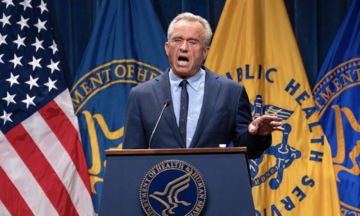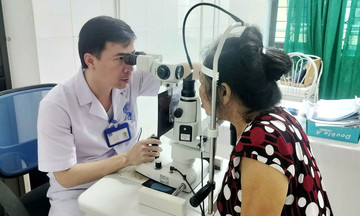Dr. Pham Do Anh Thu, head of the Heart Valve Unit at Tam Anh General Hospital in Ho Chi Minh City, reported that the patient had mitral stenosis, tricuspid regurgitation, and a weakened heart unable to perform its basic functions. The left and right atria were enlarged, increasing pressure in the patient's lungs, causing arrhythmia, and forming blood clots that risked causing a stroke. The patient also had high cholesterol, pre-diabetes, and mild coronary artery stenosis.
Doctors recommended mitral valve replacement surgery with a mechanical valve to address the severe stenosis, allowing blood to flow smoothly from the lungs to the heart and reducing pressure on the lungs. The tricuspid valve was also repaired to correct the severe regurgitation, preventing backflow of blood, allowing the right side of the heart to function properly again and reducing the burden on the entire circulatory system.
The intervention was challenging due to the enlarged and deformed heart and the small valve annulus, which increased the risk of rupture during the placement of the artificial valve, potentially leading to severe heart failure. Using a 3D transesophageal echocardiogram, doctors precisely located the damage and planned the optimal intervention to minimize surgery time and reduce risks.
 |
The surgical team operating on the patient. Photo: *Tam Anh General Hospital* |
The surgical team accessed the heart, removed the damaged mitral valve, and then stitched the mechanical valve to the patient's natural valve annulus. For the tricuspid valve, the surgeons stitched an artificial ring around the dilated valve to restore its original shape and size.
Dr. Thu advised that for 3-6 months after surgery, the patient should limit strenuous activity, take anticoagulants as prescribed, follow a dietary regimen, and have regular dental check-ups to control infections. Four months later, Ba returned for a follow-up appointment, reporting no more shortness of breath, improved sleep, the ability to do light exercise, and manage household chores.
 |
Ba during her follow-up appointment with Dr. Anh Thu. Photo: *Tam Anh General Hospital* |
Heart failure occurs when the heart can no longer pump blood efficiently enough to meet the body's oxygen and nutrient needs. It's a result of other conditions that damage the heart or force it to overwork for extended periods, such as coronary artery disease, high blood pressure, valve disease, cardiomyopathy, diabetes, arrhythmia, and congenital heart defects.
Initial symptoms include palpitations and dizziness, which can be mistaken for arrhythmia or neurocirculatory asthenia. More pronounced symptoms, such as shortness of breath (especially during exertion or when lying flat, requiring elevated pillows for sleep), fatigue, weakness, persistent dry cough or wheezing, swelling, and sudden weight gain, indicate a more severe stage of the disease.
Heart failure is categorized as left-sided, right-sided, systolic, or diastolic to aid diagnosis and treatment. Depending on the condition, doctors may recommend pacemakers, implantable cardioverter defibrillators (ICDs), or surgery. Severe cases may require ventricular assist devices (VADs) or heart transplants. Patients often need to take anticoagulants as prescribed, adopt lifestyle changes like reducing salt intake to minimize water retention, engage in appropriate physical activity, quit smoking, limit alcohol consumption, and manage their weight.
Dinh Lam
| Readers can submit questions about cardiovascular diseases here for doctors to answer. |












